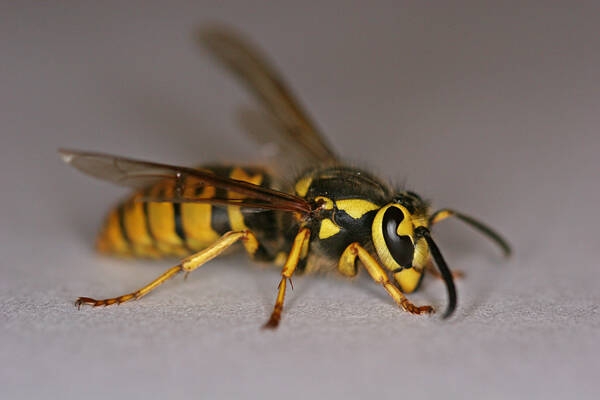The Anson Extension discusses safety when dealing with yellowjackets
ANSON — Hidden yellowjacket nests can become a real nuisance in the landscape this time of year, particularly when it comes to mowing or cleaning the garden. Appearance-wise, these wasps are often confused with honey bees, however yellowjackets are more slender, boldly colored, and less hairy. Honey bees are only capable of stinging once, while yellowjackets will chase trespassers and sting repeatedly.
Unlike honey bees, wasps will not overwinter, so currently the colony is focused on securing the next generation, a healthy mated queen to hibernate. By August-September a yellowjacket colony is nearing maturity and the nest may house several hundred to 1,000 individuals. The number of workers has grown all summer. They have been expanding the nest, foraging for food, defending the entrance, tending to the queen, and raising brood.
Late summer seasonal changes in weather set yellowjackets off. The current queen is laying less, the amount of available insect prey drops, and what remains is an aggregate of starving, angry wasps on the defense. In spring, aggression is generally not an issue as the nest is smaller and food is plentiful. With a nest at ground level yellowjacket larvae and adults are a favorite snack for skunks, raccoons, and bears.
Yellowjackets are considered beneficial hunters, preying on agricultural, ornamental, and turf plant pests such as caterpillars, grubs, aphids, and other insects. Also scavengers, they are attracted to other foods like meats and sweets as the number of insects diminish.
Yellowjacket nests will die out after the first hard frost, however sometimes nests need treatment due to proximity to dwellings or threat of anaphylaxis. According to NC State University, the best way to manage problematic ground nests is to use an insecticide product labeled for wasp and hornet control such as quick knock-down aerosol products that contain pyrethroid insecticides as an active ingredient. Wasp and hornet sprays are designed to be applied from a distance of 10-12’ and foam, expanding into the entrance, which increases direct contact and slow emerging wasps.
The entrance to a yellow jacket nest is a mere 1 inch wide, often hidden in a hedgerow, or other inconspicuous location. Target ground nests at night or late dusk when all the foragers have returned. Protective clothing is highly recommended. Yellowjackets are attracted to light so do not hold a flash light while applying insecticide. Check the site later in the day to determine if a second application is needed. A slower acting, but equally effective approach is to apply 2 teaspoons of 5% carbaryl insecticidal dust at the nest entrance, also at night.
Each year there are stories about using household chemicals or fuels such as bleach, gasoline, or diesel in an attempt to avoid toxic insecticides. Please don’t do this. These treatments are more toxic than most labeled pesticides, will kill desirable plants, contaminate the environment, and pose a fire or health hazard to humans. Most pesticides are designed to break down relatively quickly in the environment and are safer for your family and the environment. A final note, nuisance yellowjacket nests can be dangerous to treat without proper protective gear and clearly there is a high likelihood of being stung, so please remember a pest control professional is another option. If you have questions about structural or garden pest ID or management contact the Anson Extension horticulture agent at aimee_colf@ncsu.edu or 704-694-2915.
Aimee Colf is the Horticulture Agent for the Anson Extension.

